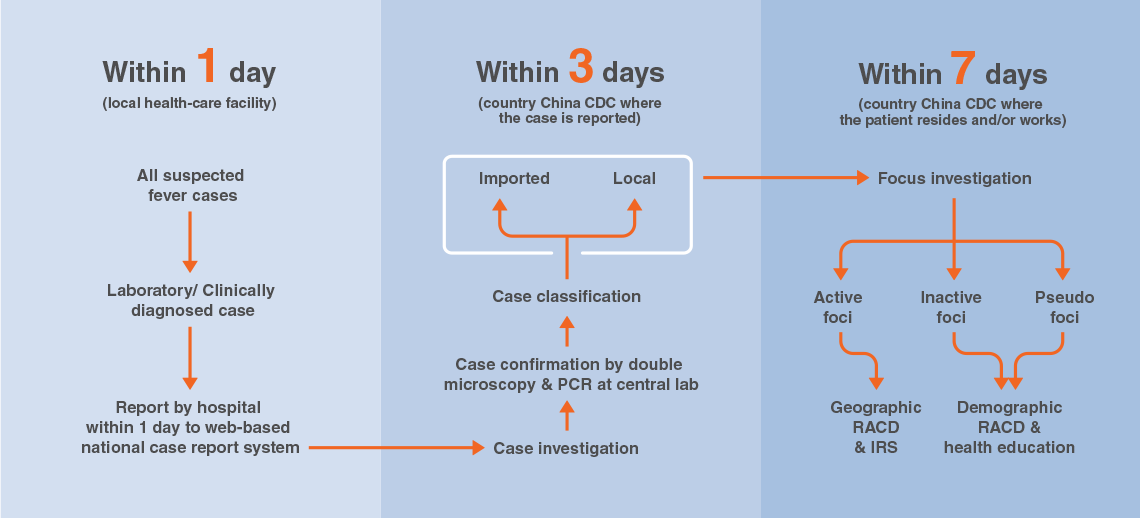
Malaria elimination requires strong, evidence-based surveillance and response strategies that enable programmes to identify and respond to every malaria infection. The APMEN Surveillance and Response Working Group (SRWG) was developed for that very reason – to be a peer-led, technical working group for APMEN Country Partners and partner institutions to expand the knowledge base, guide the region-specific operational research agenda, and address the evidence gaps.
The SRWG builds capacity by working to develop the skills of malaria programmes on rapid reporting, case data analysis, use of case-based risk stratification and spatial decision support systems, all to improve the quality and effectiveness of malaria programmes. The topics covered at previous meetings have included mobile and migrant populations, surveillance system strengthening, and surveillance and response indicators and activities for elimination and prevention of reintroduction (POR).
The APMEN SRWG aims to further develop and coordinate surveillance and response activities that support malaria elimination in APMEN countries and accelerate progress towards the Asia Pacific regional elimination goal of 2030. For example, at the inaugural SRWG meeting in 2013 (hosted by Jiangsu Institute of Parasitic Diseases in Wuxi, China), the ‘1-3-7’ surveillance and response strategy was introduced. The ‘1-3-7’ strategy is a malaria case-based reporting and response set of targets used to guide and monitor case reporting investigation, and response. Originally implemented in 2012, the strategy has been a key factor in helping China reach zero locally-transmitted cases of malaria in 2017 and will support its efforts to maintain the interruption of transmission.
Following the success of the ‘1-3-7’ strategy in China, adoption and modification of the strategy in Cambodia, Indonesia, and Thailand (among others) has led to a greater awareness of the importance of establishing simple malaria case reporting and response follow-up metrics, as well as increased monitoring and evaluation activities. The ‘1-3-7’ surveillance and response strategy has been a valuable and impactful contribution to malaria programmes in the Asia Pacific region, enabled by APMEN’s ability to bring programmes together to share best practices in support of malaria elimination.

Figure: The chain of events conducted within the 1-3-7 day time windows (adapted from Cao J et al. Communicating and Monitoring Surveillance and Response Activities for Malaria Elimination: China's “1-3-7” Strategy. PLoS Medicine. 2014 May; 11(5): e1001642. https://www.ncbi.nlm.nih.gov/pmc/articles/PMC4019513/)
Photo credit: @Flickr_ADB_Eric Sales
